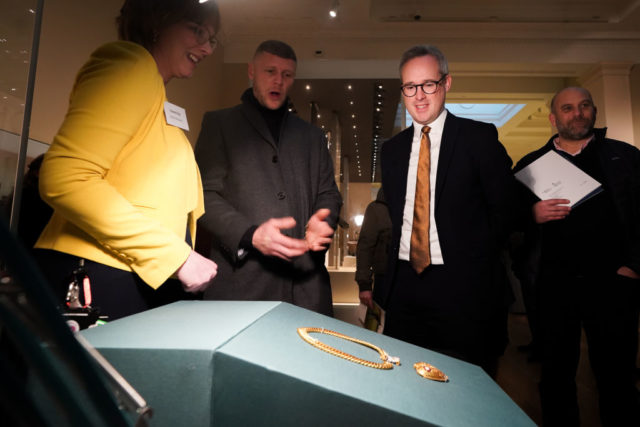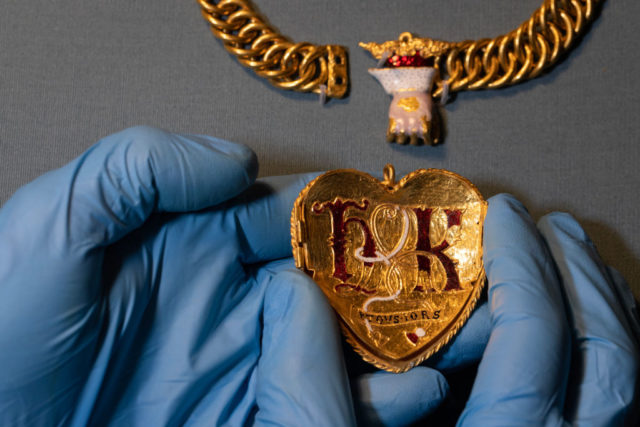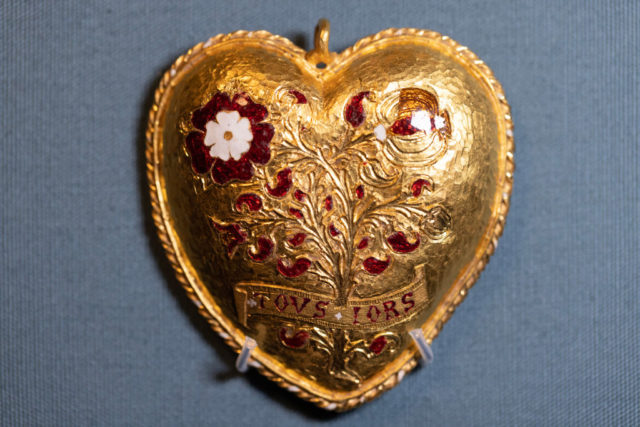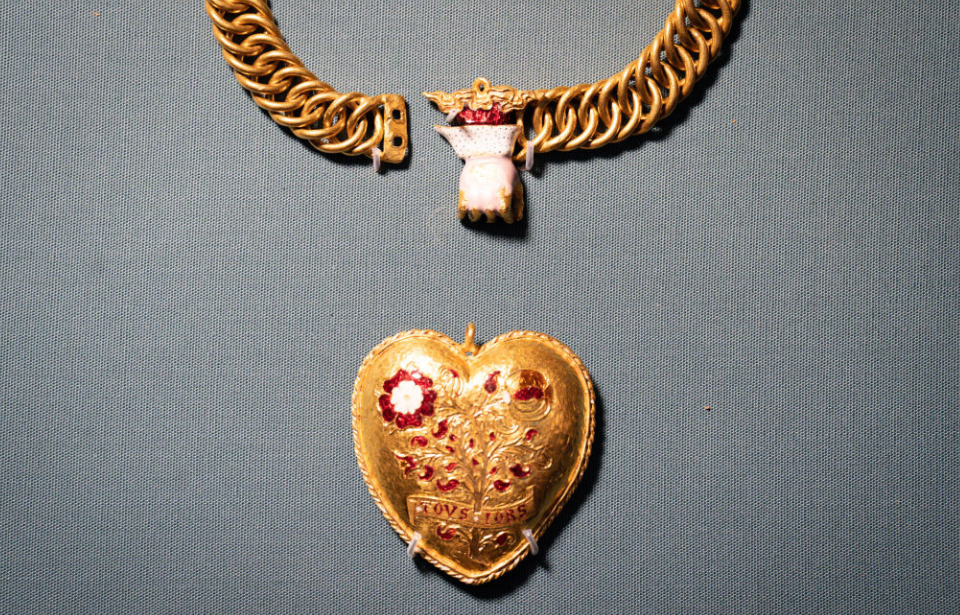Charlie Clarke is a full-time cafe owner and amateur metal detector. He proclaimed that he shrieked “like a little schoolgirl” when he dug up a once-in-a-lifetime find hidden away in a Warwickshire, England field. When his machine beeped, it wasn’t any old coin or piece of garbage that he came across, but rather an incredibly beautiful Tudor-era pendant and chain – certainly something special.
Hidden in Warwickshire
Clarke would later discover that the pendant was made out of 300 grams of 24-carat gold, something made for royalty. At the time, its authenticity was called into question by experts. Rachel King, curator at the British Museum, was initially skeptical as nothing of the sort had been found in Britain for over 25 years. Yet when the jewelry was analyzed, it proved to be real. It was also dated to the 16th century.

Although Clarke made the discovery in 2021, it has only been displayed in the British Museum as of 2023. It has not been valued at the time of publishing, however, King believes that because “it’s already been designated as of national importance,” it will fetch a large price. Clarke intends to give half of the money to the owner of the field where it was found, and use the rest for his son’s education.
A kingly connection
In addition to being crafted at a quality one would expect a royal or noble to wear, the pendant also contains many indicators that it might be connected to King Henry VIII and his first wife Katherine of Aragon. It displays symbols from both houses, a pomegranate bush for the queen, and the well-known Tudor rose for the king. In addition, on the backside of the heart are the initials “H” and “K.”

The back also reads “TOVS IORS.” This is said to be a linguistic pun commonly used during the period that combined English and French words – “all yours” and “toujours.” Despite the evidence indicating a connection with Henry and his wife, researchers working on the necklace haven’t been able to find any firm evidence collaborating the theory that this was a royal necklace.
A necklace fit for…a joust?
This hasn’t stopped experts on Tudor history from theorizing about why unique necklace was created. At present, some believe that it was likely given by Katherine of Aragon to her husband during a 1511 jousting tournament that took place at their Westminster palace. They drew this conclusion in part because the use of heart-shaped jewelry was very rare at the time.

The symbol was, however, used by the King while he secretly competed in the joust under a French name that translates to “Sir Loyal Heart.” Hearts were featured in more ways than just Henry’s pseudonym; it was also the symbol used to decorate his horse for the duration of the event.
More from us: Henry VIII Hid a Major Clue in a Painting That Might Identify His Favorite Wife
While this is certainly just a theory, it makes sense given the dating of the necklace, the presence of Henry and Katherine’s initials, and the king’s use of hearts at his tournament.
